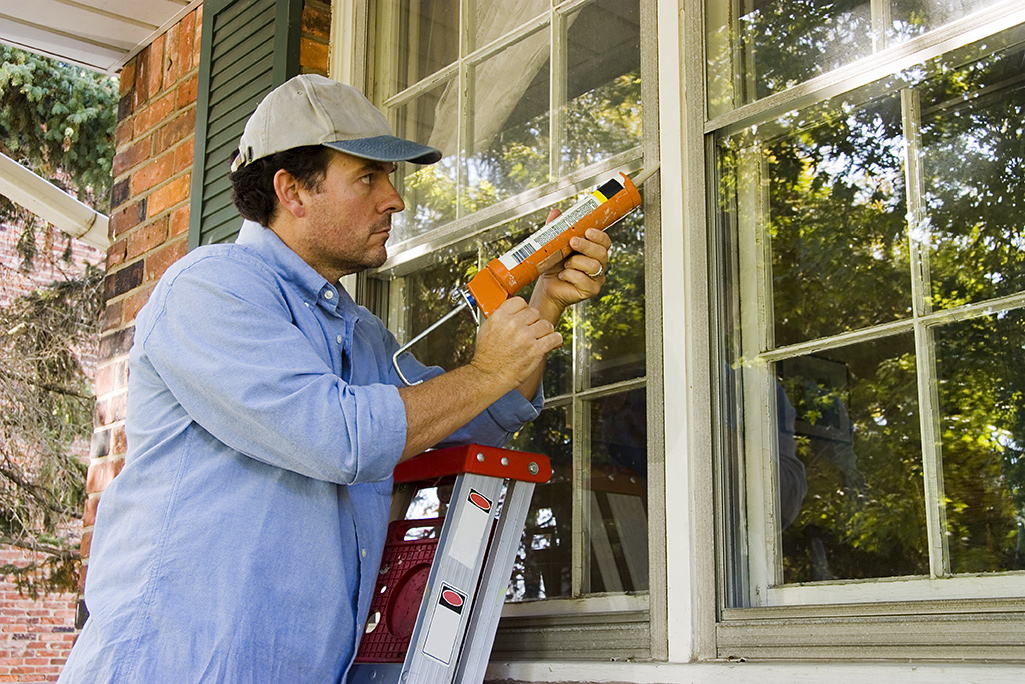
Are you trying to make your home more energy efficient? Fortunately, you don’t have to call in the professionals or spend thousands of dollars to start making energy improvements. There are dozens of different do-it-yourself projects that can be tackled whether you consider yourself a handyman—or barely know your way around a screwdriver. Interested? Start with these simple projects:
Use a power strip.
Did you know that electronics use energy even when they are turned off? That’s right, these “energy vampires” will continue to suck up energy even when you’ve taken the time to turn the power off. For example, a cable box that has been powered off but remains plugged in can consume an average of 17.83 watts, a number that doubles if the box has DVR capabilities, too. To fix this problem, invest in a power strip and plug all your appliances or electronic devices in one area into it. Then, instead of turning off each individual appliance when you leave the house, just turn the power off on the strip. This will stop the flow of energy and prevent you from wasting money on things that aren’t even in use.
Lower the temperature.
The default temperature on hot water heaters is usually set by the manufacturer to 140 degrees Fahrenheit, however most homes can live comfortably with a lower temperature. By turning down the temperature to 120 degrees Fahrenheit, the energy savings will pile up. It’s estimated that you will save over $400 per year on your water bill with this simple project. Another bonus? Lowering the temperature on your hot water heater will help slow down the buildup of minerals and corrosion in your pipes!
Install a programmable thermostat.
Another simple project that you can tackle to make your home more energy efficient is installing a programmable thermostat. These programmable thermostats make it possible for you to set what temperature your home needs to be at all times of the day. For example, if you work a 8-5 job, you could set your thermostat to power off around 7:30 a.m. when you leave the house, and then turn back on at 4:30 p.m. so your home is cool when you get back. By using one of these models, you can cut back on energy that is wasted when you’re not even home. The Environmental Protection Agency estimates that replacing an old thermostat with a newer, programmable model can slash your energy bills by up to 15%!
As long as you pick a model that is compatible with your home, this is a simple project. Turn off the electricity in your home and remove the old unit from the wall. Be sure to pay attention to how the wires connected to the old unit before you remove everything completely. It might be wise to take a picture so you have something to reference. Then, screw the mounting plate from the new unit onto the wall and pull the wires through. Connect the wires to your new model and voila!
Caulk air leaks.
During the winter, air leaks can allow cool air into your home and cause your heating system to work overtime to warm the space. In the summer, the cool air from the air conditioner flows out through these leaks, so you see, this is a problem that lasts all year long. To caulk around your windows and seal up any leaks, purchase a caulk gun and caulk from your local hardware store. Then, remove any old caulk that looks like it is cracking or flaking with a knife or screwdriver. Before you start to caulk around the windows, do a few test squeezes on a piece of newspaper to make sure that the material is coming through evenly. Then, hold the gun at a 45 degree angle and slide it along the joint of the window, releasing the caulk in a steady motion. Take a spoon or knife and try to gently push the caulk deep into the cracks of the window. If you accidentally got caulk anywhere else, use a damp cloth to wipe up the mess.
Close vents.
Do you have any rooms in your home that aren’t in use most of the year such as a guest room? If so, close the heating and cooling vents in these rooms when they’re not in use. This prevents your heating and cooling system from wasting energy by trying to control the temperature in these unused rooms.
By taking the time to tackle these projects, you will be able to reach your goal of having a more energy efficient home—and you’ll save money, too!